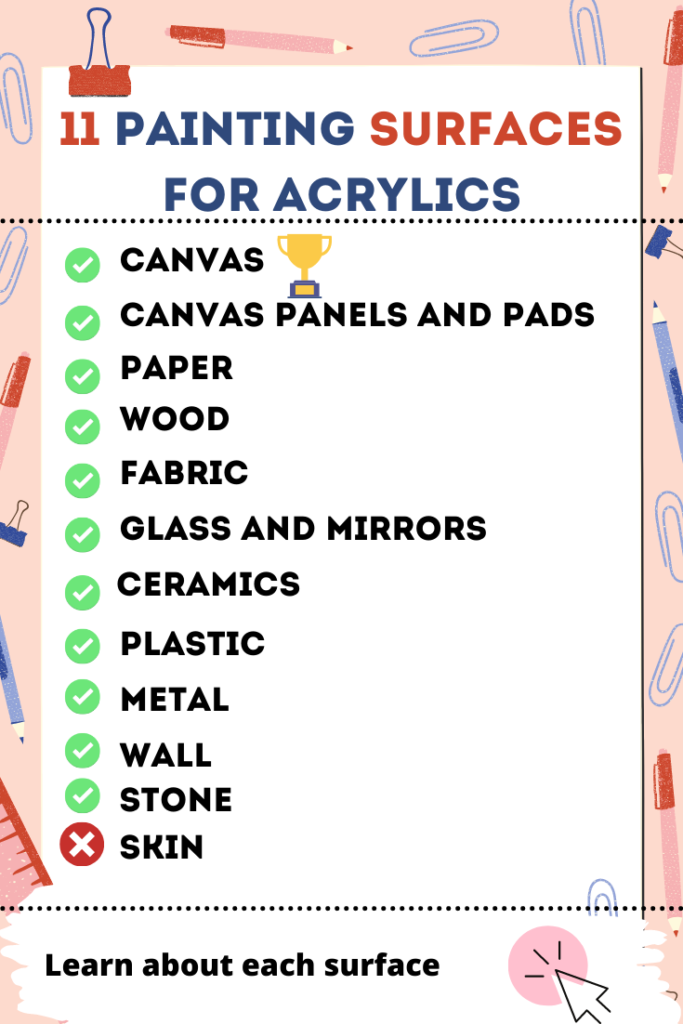Acrylic is one of the most versatile mediums, ready to serve you with any creative ideas. We all think, okay, painting means painting on big canvases like real artists. In fact, it is not true, we can use almost everything to show the world our creativity and paint on, even if nobody did it before.
The most common surface for acrylic painting is primed and stretched canvas. You can use a variety of painting surfaces for acrylics: canvas panels, different types of paper, wooden panels, MDF, glass, ceramics, fabric, and some more options! Please, do not use acrylics on your skin!
Which surface is best and how to paint on each of them – read below!
Table of content for Painting surfaces for acrylics:
- 🎖 Canvas
- Canvas panels or pads
- Paper
- Fabric (silk, denim, leather)
- Wood (hardwood, hardboard panels, MDF)
- Glass and Mirrors
- Ceramics
- Plastic
- Metal
- Stone
- Wall
- Skin – why not?
The best painting surfaces for acrylics for artists who just start are primed canvases – great results that will last longer and be easier to protect. The cheapest options are paper or canvas pads.
What Do You Use Acrylic Paint on?
What materials can acrylic paint be used on? For acrylics, it is ideal to have a primed, porous surface that has good paint adhesion properties. Good painting support is the first important among all art supplies. But acrylic paint is so versatile that it can be literally used on any surface: walls, furniture, wood, plastic, glass and mirrors, ceramics and clay, rocks, canvas, paper, fabric, and more!
This post contains affiliates that cost nothing to you but support my blog a lot. Thank you!
Acrylic paint on Canvas
Canvas is a perfect painting surface for acrylics – you can buy anywhere (online, at art stores) a pre-primed and pre-stretched canvas and just directly paint on it without any complex preparation.
Best Canvas for Acrylic Painting for Beginners in 2021 - I made a research about the best canvases. Spoiler: the BEST canvases for beginners (and affordable too) are Blick Cotton canvases!
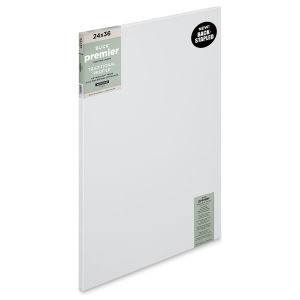

In general, canvases are made from cotton or linen and come in stretched and primed, or raw and non-stretched format. Canvas is one of the oldest and most popular painting support.
Cotton canvas is cheaper than linen, flexible, great for small and medium scale painting. Linen is more expensive, more durable, and has a rougher surface texture. As linen is firm and very stable, it is a great choice for a larger scale. Most canvases sold online or at art stores are cotton canvas.
For a beginner, I would recommend using primed and stretched surfaces as learning stretching and priming takes time and knowledge, but a lot of professional acrylic artists paint on raw canvas.
If you buy a stretched canvas, check stretcher bars, canvas texture, stretching quality to make sure the paint application will not make it saggy.
If you want to learn how to prime a canvas, use this guide.
Ready to paint? Learn how to paint with acrylics on canvas with my Easy Step-by-Step guide including affordable supplies and simple guidance: How to Paint with Acrylics on Canvas: 17 steps [Supplies included]
Acrylic paint on Canvas panels and pads
Canvas panels and pads are great for practicing and painting. They are lightweight, ready-to-use, and portable.
- Includes 24 packs of high quality 4″x4″ canvas panels with great value
- Mounted with 100% unbleached pure cotton duck and secured with a recycled cardboard core for sturdy construction and perfect resilience
- Triple primed with 4oz acid-free acrylic titanium gesso and conforms to ASTM-D4236 standard
- Back-stapled and shrink-wrapped for a clean look
- Suitable for all oil or acrylic painting and perfect for use by students through to professionals
Normally, galleries and museums don’t showcase painting on canvas pads, but nowadays everything is possible.
A canvas panel or pad still uses the same fabrics: cotton, mostly, and linen. Panels and pads use primed fabric glued to the board or pad.
Always choose a good-quality surface – edges are wrapped around and glued with high-quality archival glue.
My best pick for canvas panel is Mont Martre Canvas Panel – affordable ($13.95 for 12 panels), great both for painting and acrylic pouring, variety of sizes available, triple primed panels.
Canvas pads may not last as long as real canvas, but they are a cheaper option for learning for every beginner. I like using canvas pads for small works. Canvas pads are made from canvas or paper.
The best Canvas Pad is Canson XL Paper Pad – very cheap ($9.42 for 24 sheets), extremely popular, and has great reviews, easy to buy and use, excellent quality!
Read also: 38 Best Canvas for Acrylic Painting for Beginners that Professionals use
Acrylic paint on Paper
Paper is the easiest and cheapest way to start painting for a beginner. You don’t have to choose canvas material, prime it, stretch it – you can immediately start painting!
Basically, you can use any paper, but note, that with a big amount of water or thick layers fine paper will warp or even dissolve and tear up. The high-quality archival paper will last longer. Experiment with papers, paint absorption and you find a lot of new effects and textures.
Paper for Acrylics
To tolerate water, thicker application, and last longer, some brands create a special paper for acrylics. This paper is heavy to prevent warping, it is primed to assure good paint adhesion and absorption. Finally, it is way cheaper than real canvas.
“Heavy” paper means paper with a weight of 290g/m² or higher.
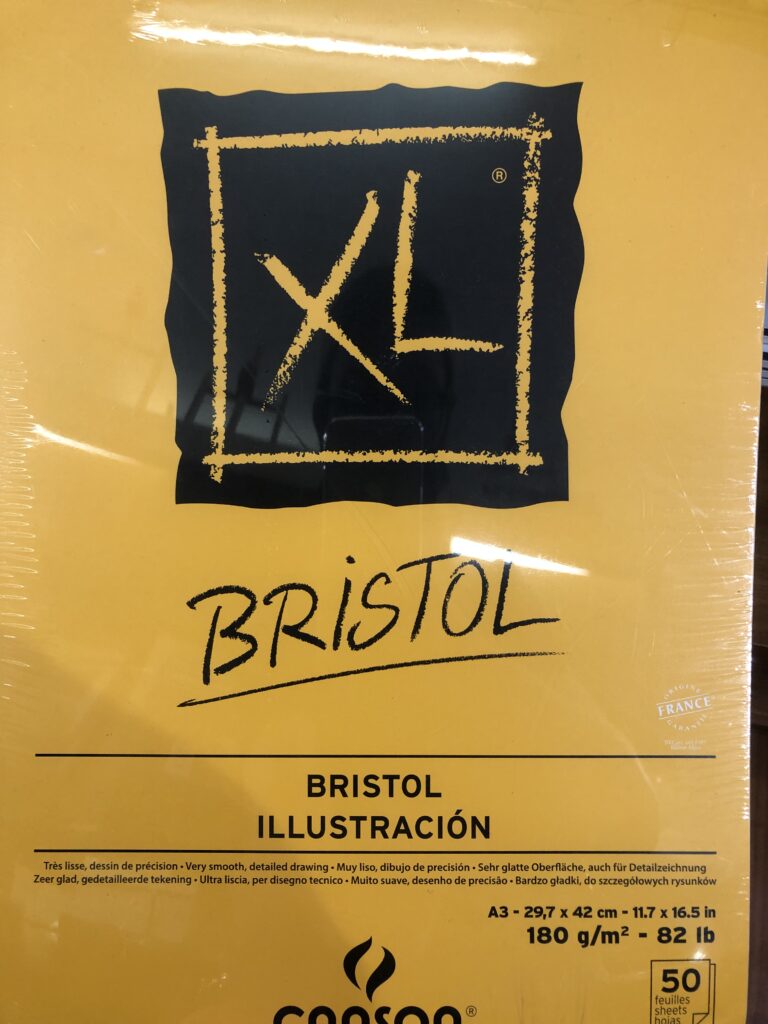
Canson XL Paper Pad I mentioned above is exactly one of these special papers. Strathmore, Canson, and Grumbacher make good papers for acrylics.
Watercolor Paper
Acrylic paint can imitate watercolor with a due amount of water. Artists grade watercolor paper is suitable for acrylics too with or without gesso.
The main advantage of watercolor paper is that it deals well with water – it will not warp, tear apart or loosen. The upside is that watercolor paper can be more expensive than acrylic paper.
Yupo watercolor paper can not be the perfect paper for acrylics as it is not really absorbent. But it still can be one of your experiments.
Watercolor paper comes individually, in blocks, pads, or even on boards. The best way to go is to buy a block, e.i. Cranson Watercolor pads will cost only around $10 for 9×12′.
Read also: Can You Use Acrylic Paint on Watercolor Paper? 5 Steps to Do It & Best Papers
Can you use acrylic paint on the fabric?
Fabric loves acrylic and it is such a great way to create custom clothes or installations and you can definitely use acrylic paint on fabric! Be careful, you need special paint “for fabric”.

Related: How to Paint Fabric with Acrylic Paint Permanently: Full Guide
Acrylic paint is permanent on fabric which is good when you paint on it and quite bad news if you accidentally poured some paint on clothing (hey, turn it into a custom piece!), as acrylics are very hard to wash off.
You can paint on denim, leather, silk – almost any kind of fabric, as well as shoes.
Tips for painting on fabric:
- To make the painted area protected and last longer, especially if you will wear it, use fabric medium as GAC 900 by Golden Acrylics or Liquitex Fabric medium – both brands have well-known authority and produce high-quality paint and acrylic mediums.
Otherwise, the paint can eventually peel off.
- Put a piece of cardboard in between or under the fabric to protect underneath the surface or another side of the clothes from paint
- To paint on silk, use fluid acrylics. Purchase fluid acrylics or thin acrylic paint with fluid medium. Golden Fluid Acrylics come in set of 10.
- Acrylics are super great for painting on leather items, which means you can customize your jackets, wallets and shoes. Please, paint only on a clean surface – you will definitely need Isopropyl alcohol to de-grease or even leather deglazer if your leather item was covered with silicone coat. And, finally, if you really want to use this leather item after painting on it, you need to protect it with Paint Finisher like Angelus Brand Acrylic Leather Paint Finisher
- Acrylic paint for leather – Angelus Leather Paint (set of 12)
Read also: Painting Leather with Acrylics: How to Paint and Seal Leather
Acrylic paint on Wood
I'm ready to paint on wood! Give me practival advice! OK, here is the best paints list and step-by-step guide: Painting Acrylic on Wood: Best Supplies & How-to Guide
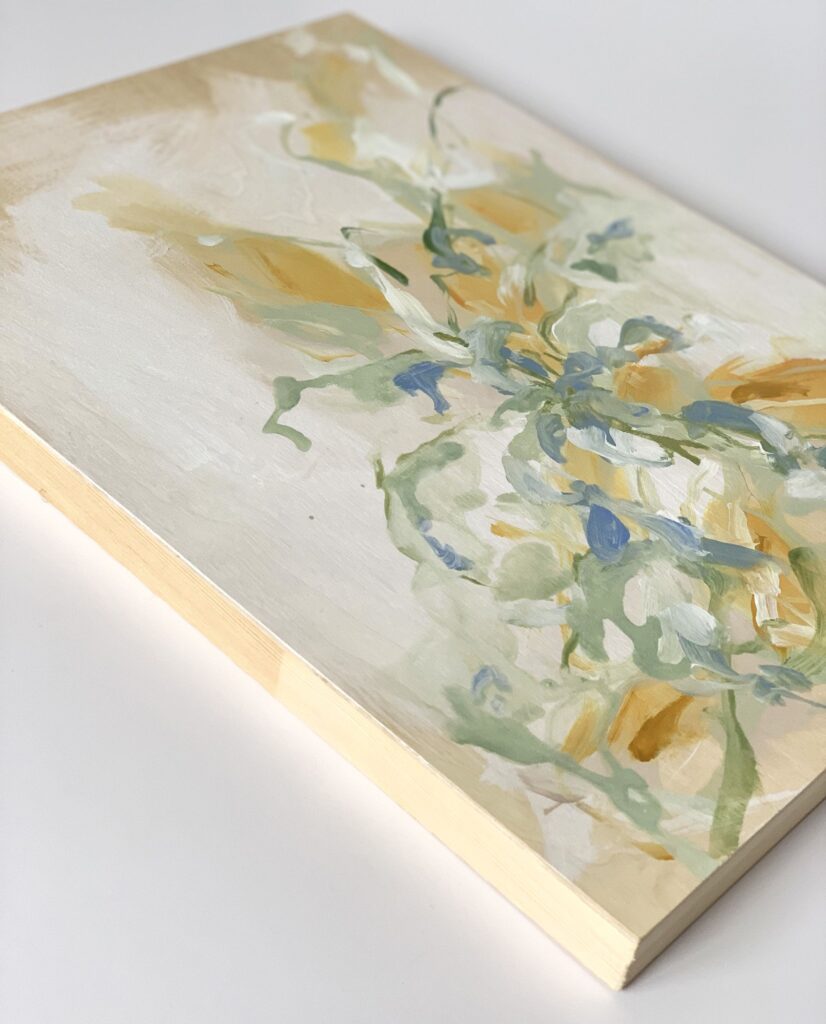
Wood is the most stable and solid surface to paint on. You can paint on natural wood or composite boards, but always remember that you need to prime your wooden surface to make sure all-natural elements in wood and impurities will not destroy your painting.
Composites are masonite, HDFB high-density fiberboard, medium-density fiberboard (MDF). Their main advantages are that they don’t have natural elements in them which can cause stains or yellowing, and they are very smooth to paint onto. They also don’t have natural wood texture.
The main disadvantage of wooden panels is the option of swelling or molding in case you neglected the proper priming and preparation process. Not to forget about the weight too – wood is much heavier than paper or canvas.
The whole prep process needs another article, which is this post. Feel free to read it before painting on wood.
Can you paint acrylic directly on wood?
Well, yes and no. You can paint directly on wood, but unprimed wood soaks a lot of paint, which means you will need more paint, it will dry faster and natural wood elements can affect the painting later. It is better to prime wood.
Hardwood
Painting on hardwood needs good priming, some space, and some strength, as it will be a heavy piece. But it is also freedom – you can choose size, the thickness of wood, type of wood.
3 main types of wood that work great for acrylic painting are mahogany, birch, and maple.
Mahogany is resistant to rot which is why it is the Number 1 choice, but with proper priming and indoor storage birch or maple will be good too.
We don’t use softwoods for painting as they are very likely to warp.
Wooden panels
There are quite a lot of wooden panels types: plywood, hardboard, masonite, MDF., etc. Normally they come unprimed and with an option of being cradled.
Plywood
Plywood panels are the most common for acrylics and they are usually made from Baltic birch or maple wood. They have a smooth surface and normally come unprimed which means you need to san it, if you want a smoother surface and prime them with gesso.
Some artists say it may warp, I don’t use plywood either.
Hardwood Panels
Hardwood panels are usually made from oak, birch, mahogany, and walnut. They are very durable and make a great alternative to canvas.
However, as painting surfaces for acrylics, these panels may be too heavy and expensive.
Masonite
Masonite or hardboard panels are very durable, cheap, and smooth painting surfaces for acrylics.
Masonite is a mixture of wood fibers that have been broken down and molded into a board using heat, pressure, and the natural adhesion of lignin.
It comes in a tempered or untempered form. Tempered masonite will not work with acrylic paint as tempering means the board was covered with linseed oil after hot press. That means the paint cannot stick to it, as it is oily now. Untempered masonite is softer and more absorbent.
Insider tip: sand the masonite before priming or buy a pre-primed masonite to paint on a very smooth and absorbent surface.
Masonite is a good and more affordable alternative to canvas, but it has some inconveniences too: large panels can warp or bend over time.
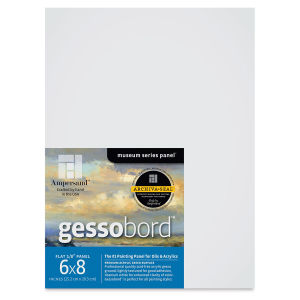
The most loved hardboard is Ampersand Gessobord – an affordable, pre-primed, archival hardboard. Great quality, smooth surface, and variety of sizes and thicknesses available. These boards are also cradled.
Medium-Density Fibreboard (MDF)
Medium-Density Fibreboard, MDF, is a cheap, smooth, strong enough, and dense surface for acrylic painting. MDF is made from pressed wood fibers, but it also contains resin binder (can be dangerous as it includes carcinogenic formaldehyde) and wax. MDF is less dense and strong than hardboard.
Unprimed MDF cannot be used for painting as it is not water-resistant, but also will soak more paint than you may need to use with a primed surface. To avoid it, make sure you will properly prime the surface before painting and seal the painting after. I will repeat it – prime all sides of MDF and never sand or see it without a respirator. On Amazon, you can buy 30 MDF board 6×8″ for $14.
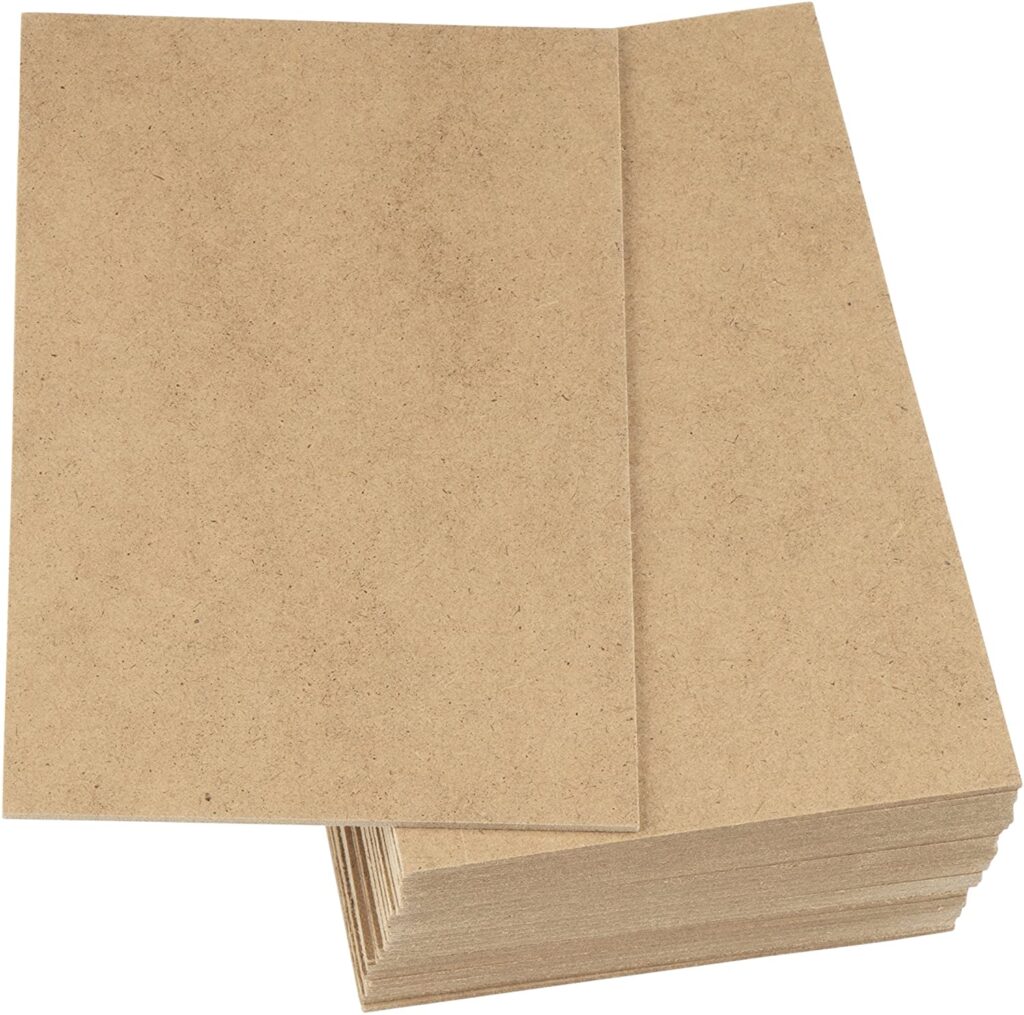
Acrylic paint on Glass
You might have seen some workshops where people paint on wine glasses or plates. This is it! You can use any acrylic paint on glass and then bake your piece in your oven – done!
Indeed, glass is not a perfect surface for acrylic painting – it is non-absorbent and glossy. But with the right paint, everything is possible.
I made a list of 9 acrylic paints that will STICK to glass permanently: Can You Use Acrylic Paint on Glass? 9 Best Sticky Acrylic Paints for Glass! Spoiler: Folk Art Paint is the best!
Without priming, the paint will peel off someday.
You can also not only paint on your kitchenware but purchase float or window glass for your painting experiments. It is cheap, smooth, and clear surface, but, as you can guess, fragile.
To paint on the glass, you must wipe it with rubbing alcohol, then you can sand it, you apply gesso, you paint, and either you apply a protective finish, or you just bake your piece.
To paint on glass you can use Golden Heavy Body Artist Acrylic Paints or Folk Art Enamel Acrylic paints – they both are non-toxic and durable. Folk art is specifically made for glass and ceramics and is good for dishwashing too.
Plexiglass
As glass is extremely fragile, here is a less breakable alternative – plexiglass. The process to follow is the same – prepare the surface before painting, paint, protect and frame the painting.
Mirrors

Acrylic paint will stick to the mirror too, as well as enamel acrylic paint. Be aware that acrylics are easy to peel and scrap off from glass and mirrors, so be careful or seal the finished painting with a protective spray.
Acrylic paint on Ceramics
It is so much fun to paint on ceramics: you can paint on your favorite mug and bake it in the oven. It makes sense, as clay is a porous surface.
Even during pottery workshops, you will have time to paint on your pieces with fluid paint. To paint on ceramics, use Golden Heavy Body Artist Acrylic Paints or Folk Art Enamel Acrylic paints– they both are non-toxic, high-quality, and durable. Folk art paints are specifically made for glass and ceramics and are good for dishwashing too.
Make sure you will prime clay before painting, otherwise it will soak all paint, and seal the finished painting too to make it last longer.
Please note, that colors will dry darker on clay during the glazing and drying process. Look at my piece:


How to bake your favorite mug with acrylic painting, read in my Bakeable acrylic paint guide.
Acrylic paint on Plastic
In general, plastic is not supposed to be used as one of the painting surfaces for acrylics.
As it is a non-porous and shiny surface, paint can easily peel off. Some types of matte plastic can accept acrylic paint, though.
To paint on plastic, you need to prime it with special primers, like Krylon spray primer or a base coat for plastic. To make sure you will be able to touch the painted plastic pieces, seal the surface when the painting is done (use a special sealer).
Acrylic paint on Metal
Metal is a rare surface for acrylic painting. First of all, like glass and plastic, metal is not providing enough paint adhesion, second, there is one more dangerous factor – rust.
As with other surfaces, metal should be properly primed, you need to assure the surface is rustproofed and apply a protective coat.
Good paint for the metal surfaces is Rust-Oleum High-Performance Enamel Spray Paint.
Read the full article: Can You Use Acrylic Paint on Metal?
Acrylic paint on Wall
Acrylic paint was initially created for indoor and outdoor painting.
It is today 2 completely different types of paint, and when we talk about acrylic paint used for painting, it can be definitely used on walls inside the house.
For outside, please use the paint made for it to make sure it will last longer and you will not have any issues with repainting. Acrylics used by artists can fade when exposed to direct sunlight, or yellow when varnished over time.
I need to mention, however, that I know a lot of abstract painters who use Dulux for their large-scale projects.
Read the full guide: Can You Use Acrylic Paint On Walls? And How To Do It Best
Acrylic paint on Stone
Acrylics work on stone and rocks too. You may need to find smooth rocks to make sure the surface is good enough for painting.
Depending on the size of the chosen rock, e.i. if you paint on small rocks, you may need round brushes for detail work.
Basically, you find a rock, clean it (without soap or solvents!), let it dry, apply gesso, and paint on it. If you paint with kids or just having fun, you can skip gesso.
Acrylic painting on stone needs to be sealed, e.i. with a spray sealer.
I have a full how-to guide about the best acrylic paints for rocks and painting them, check it – Best Paint for Rocks & Pens for Rock Painting!
Here is an example of how you can paint your rocks, thanks to Cindy Tomas for these amazing designs!

Can you use acrylic paint on skin?
Technically, only non-toxic acrylics can be used on the skin.
Nowadays all acrylic brands produce non-toxic paint, but still, it contains a lot of chemicals and you will never know what effect it can cause.
Definitely never use it on sensitive skin!
In fact, acrylic paint will quickly peel off your skin when it dries.
Do not use acrylics paint on your skin or your children’s skin. Instead, purchase a paint kit where it is mentioned “face paint” or “body painting”.
In my article about the safety of acrylics for the face and body, I described 6 types of paint that you CAN use on skin instead of acrylic and also gave a DIY tip to turn acrylics into face paint. Enjoy!
No matter what painting surfaces for acrylics you will choose, except for your skin, remember protection – how well you protect your painting affect how long it will last.
The traditional way to seal and protect an acrylic painting is to apply an isolation coat, and then varnish or protective finish. I know, it may sound difficult, but here are 2 practical how-to guides: one about isolation coat, and one about varnishing.
Painting Surfaces for Acrylics FAQ
What is the best surface to paint acrylics on?
The pre-primed and pre-stretched canvases are the most universal and easy surface to paint acrylics on. They do not need any extra preparation, you can them! Canvas panels and pads are much cheaper than canvases and are also one of the best surfaces to paint on – they are lightweight, portable, easy to use, but they are often smaller than canvases and are quite hard to frame.
How do you make a surface for acrylic painting?
A surface for acrylic painting often needs preparation: it is also called priming. The most popular primer is gesso – some canvases in art stores are already pre-primed so you don’t have to do any extra work! The surface should be clean, dry, and primed – this way the paint will stick (adhere) and your painting will last a long time!
How do you paint smooth surfaces with acrylics?
Some painting surfaces for acrylics need to be sanded, like wood, to become smooth and nice to paint on. Use regular 220-grit sandpaper to smooth the surface before painting. You also need to prime some surfaces like wood, plastic, or glass, as they tend to either soak in too much paint or not adhere well.

Masha Eretnova, born in 1991, is a Buenos Aires-based certified teacher, artist, and member of the Professional Artist Association with 20+ years of personal painting journey.
She started painting and drawing very early and is now an international abstract artist and educator passionate about acrylic painting, gouache, and crafts.
Her works are part of international exhibitions and contests, including ArtlyMix (Brazil), Al-Tiba 9 (Spain), Exhibizone (Canada), Italy, and many more.
Besides her artistic pursuits, Masha holds a post-grad diploma in Teaching Film Photography and 2 music school diplomas: piano and opera singing.
Last update on 2024-04-26 / Affiliate links / Images from Amazon Product Advertising API




